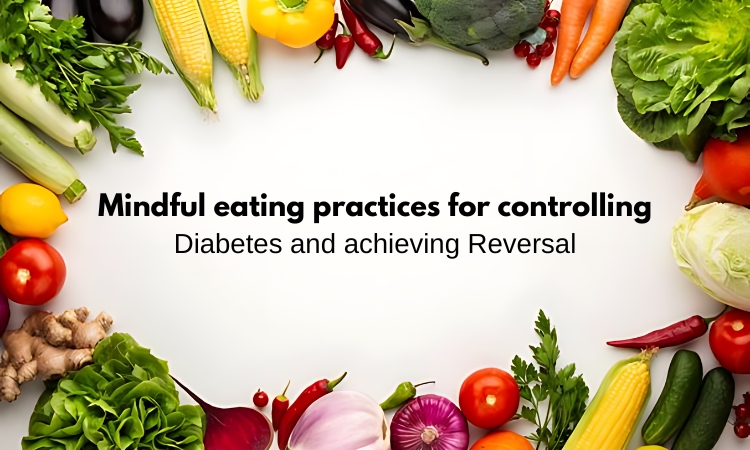Understanding the Benefits of Intermittent Fasting for Diabetics

The Role of Stress Reduction in Diabetes Reversal
May 18, 2024
Antioxidant Rich Foods for Protecting the Brain Against Oxidative Stress
July 10, 2024Understanding the Benefits of Intermittent Fasting for Diabetics
In the ever-evolving landscape of diabetes management, intermittent fasting (IF) has emerged as a dynamic strategy with promising benefits. This comprehensive exploration delves into the intricate relationship between intermittent fasting and diabetes, shedding light on its various forms, potential benefits, and the importance of individualisation in crafting an effective diabetes management plan.
Understanding Intermittent Fasting
Intermittent fasting is not a one-size-fits-all approach, and various methods cater to different preferences. From the popular 16:8 method to alternate-day fasting and early time-restricted feeding (eTRF), each variant offers a unique perspective on harnessing the benefits of fasting for improved health.
Types of Intermittent Fasting Diets for Diabetes
While there is no one-size-fits-all intermittent fasting approach for diabetes, several common methods have garnered attention:1. 16:8 Intermittent Fasting: This involves an 8-hour eating window followed by 16 hours of fasting. Many people find success fasting from 8 p.m. until noon the next day, maintaining their eating window between noon and 8 p.m.
2. 5:2 Intermittent Fasting: A pattern where regular meals are consumed for five days, followed by two days of fasting with fewer than 500 calories per day.
3. Alternate-Day Fasting: This entails a full 24 hours of fasting or minimal calorie intake, followed by 24 hours of regular eating.
4. Early Time-Restricted Feeding (eTRF): Mealtimes are restricted to the morning and early afternoon, followed by a fast for the rest of the day and night.
Benefits of Intermittent Fasting for Diabetes
When approached safely, intermittent fasting may offer several benefits for individuals with diabetes. Notably, weight loss achieved through IF may lead to a reduction in diabetes medication. Some cases even suggest the possibility of discontinuing insulin use after a month of intermittent fasting.
Other potential benefits include
1. Improved insulin sensitivity
2. Lower blood pressure
3. Reduced oxidative stress
4. Appetite suppression
5. Increased fat oxidation
However, it's crucial to emphasise that more research is needed to determine the long-term benefits of intermittent fasting on glucose control and diabetes complications.
Navigating Intermittent Fasting Safely
While intermittent fasting holds promise, safety is paramount, especially for individuals with diabetes. Consultation with healthcare professionals is crucial before embarking on an intermittent fasting journey. Adjustments to medication dosages and regular monitoring of blood sugar levels are essential components of a safe IF experience.
Long-Term Sustainability and Individualization
Sustainability is key in any dietary approach. Intermittent fasting, while showing promise, must align with an individual's lifestyle for long-term success. Balancing the potential benefits with the practicality of daily life ensures a sustainable and effective approach to diabetes management.
Types of Intermittent Fasting Diets for Diabetes
While intermittent fasting diets come in a variety of styles, no particular one has been proven best for people with diabetes. Here are a few common intermittent fasting diets:
1. 16:8 Intermittent Fasting: People following this diet eat all meals within an 8-hour window, followed by 16 hours of fasting. Many people fast from 8 p.m. until noon the next day, and keep their eating window between noon and 8 p.m.
2. 5:2 Intermittent Fasting: This is when you eat regular meals for 5 days, then have 2 days of fasting, during which you eat fewer than 500 calories per day.
3. Alternate-Day Fasting: This is a full 24 hours without eating anything or only eating a small amount, followed by 24 hours of eating as usual.
4. Early Time-Restricted Feeding (eTRF): This restricts your mealtimes to the morning and early afternoon, followed by a fast that lasts the rest of the day and night.
More research is needed to determine the long-term benefits of intermittent fasting on glucose control and diabetes complications, according to the ADA.
Conclusion
In the intricate dance of diabetes management, intermittent fasting emerges as a versatile partner, offering a spectrum of potential benefits. From improved insulin sensitivity to weight loss and beyond, IF presents a multifaceted approach to addressing the complexities of diabetes.
As we navigate this evolving landscape, it's crucial to recognise the importance of individualisation and safety in integrating intermittent fasting into a diabetes management plan. Collaboration with healthcare professionals, regular monitoring, and a sustainable approach pave the way for individuals to harness the potential of intermittent fasting in their journey toward optimal health.







